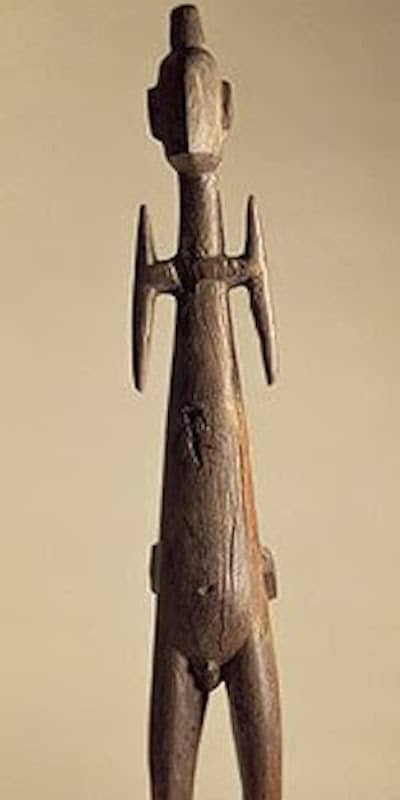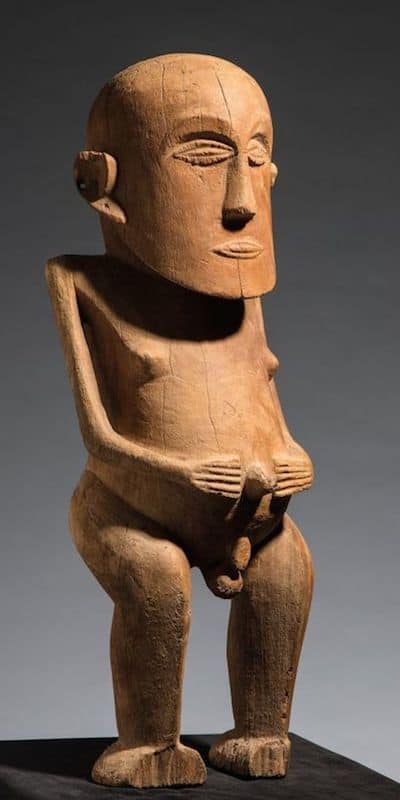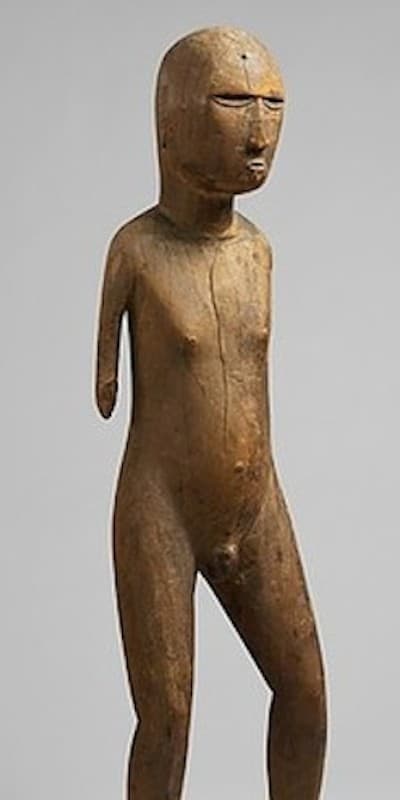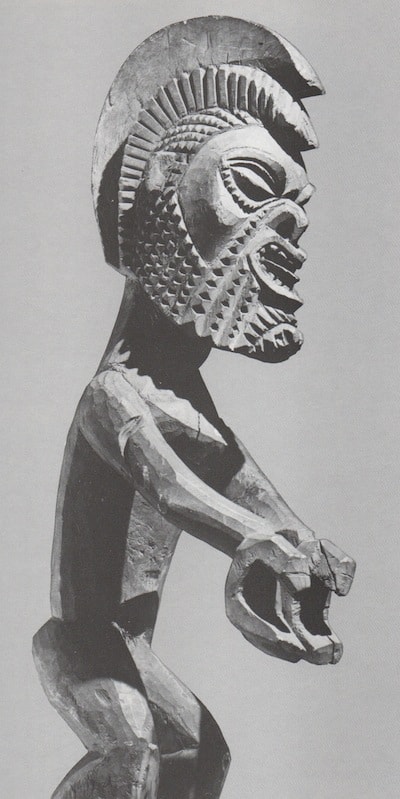Polynesian Sculpture
Polynesian Sculpture is some of the most valuable and sort after pieces of tribal art. There are many different Polynesian Sculpture types, which vary depending on the region they come from. This article helps to visually show the main types of Polynesian Sculpture. It aims to help the reader identify which region different Sculpture comes from. The best-known Sculpture in Polynesia comes from the New Zealand Maori. Other polynesian sculpture is rare but also highlty collectible.
Polynesia was not the only region in the pacific to produce sculptures. New Guinea sculptures are as varied.
I Buy Old Polynesian Sculpture and tribal Art. If you have one to sell please contact me. If you want to know what your oceanic art might be worth please send me a JPeg as I would love to see it


Polynesian Sculpture general information
Polynesian Sculpture represented gods, deities or an ancestral hero. They were sometimes made free standing but are also often found as part of an object like the top of a fly whisk.
They vary in size from very small charms made to hide on your person to monumental sizes made for the outside a ceremonial enclosure.
The following is a visual guide to types of Polynesian Sculptures but due to the huge variety throughout the Pacific, it is far from inclusive. It is probably better to think of this article as a brief introduction to this fascinating group of art forms. If you want more detailed information about a particular piece please feel free to contact me.
If you want detailed information I recommend reading Atua or Polynesia
Polynesian Sculpture by Area
Cook Island Sculpture

Cook Island Sculpture
Sculptural from the Cook islands were of important Ancestral figures. These ancestors were often the first voyageurs to land on the Cook Islands. These ancestral sculptures were the main focus within the cultural enclosure.
The majority of sculpture destroyed along with the temples shortly after the arrival of the London mission Society by 1821.
Cook island is also well known for their ceremonial Adze.




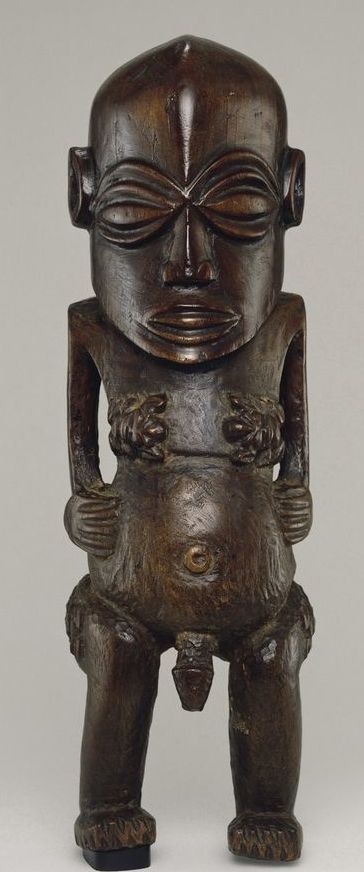
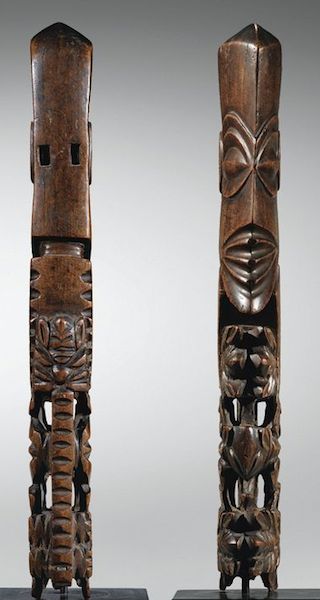

Hawaiian Sculture
Hawaiian free standing sculpture made for tribal use is exceedingly rare. Only around 150 examples exist worldwide.
Sculptural tradition in Hawaii was directly linked to the islands traditional religion. In 1819 the island became Christian and the old gods destroyed and abandoned to rot.
The sculptures that remain from the pre-Christian era though are amongst the most powerful and collectible pieces of art





Austral Island Sculpture

Austral Islands Sculpture
Very few freestanding sculptures exist from the Austral islands but the few that there are, are superb.
The islands are best known for its wonderfully carved Austral island Paddles and drums.
There are also a few very rare staff gods and wonderfully carved fly whisk handles

Austral island paddle terminal

Austral Island Paddle


Fly Whisk

Fly Whisk Terminal
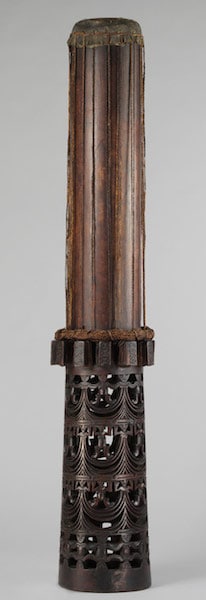
Austral island drum
Easter Island Sculpture
Easter Island Polynesian Sculpture
Most people associate Easter Island Sculpture with their giant stone Moai. There are however lesser known small wooden sculpture which in my opinion are even more fascinating. Wooden Easter Island sculpture has Four main types.
Starved Male figures Moai Kavakava
Full bodied Male Figures Moai Tangata
Female Flat bodied figures Moai papa
Lizard – men hybrids Moko





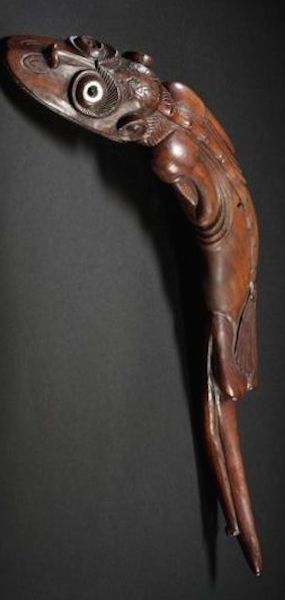

Tahitian Sculpture / Society Islands Sculpture
Tahiti / Society Islands sculpture
The majority of Sculpture from Tahiti are of the god Ti’i. Ti’i sculptures were mainly put on the top of canoe prows of double-hulled fighting canoes.



Tahiti was one of the first places in the pacific to undergo massive change from western contact. Sculptures from Tahiti are exceedingly rare

Marquesan Sculpture
Marquesas Islands Sculpture
Free standing sculpture from the Marquesas islands is very rare. A Marquesan sculpture is normally a part of a utilitarian object.
The Marquesan islands also produced superb war clubs




Marquesan stilt steps used in a sport. The step attached to a round pole about 6 feet long and 2 inches in Diameter.
Quite a few exist in collections.


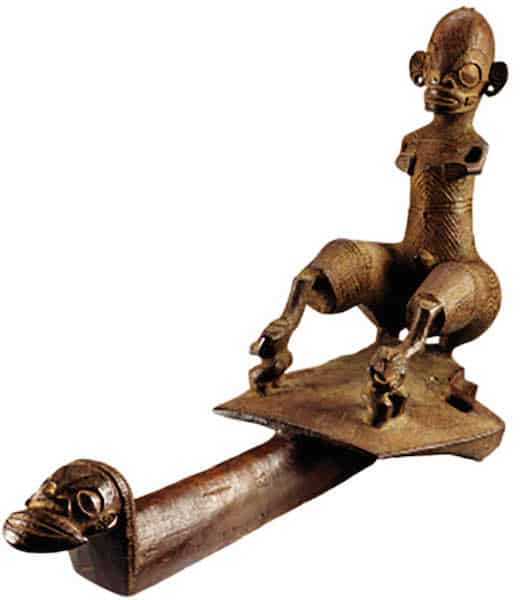
Canoe prow

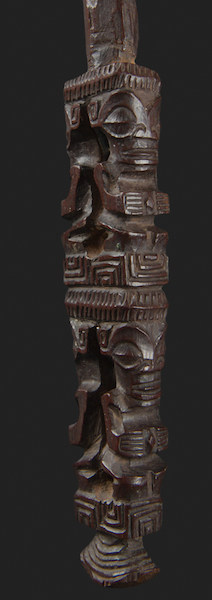
Marquesan fan handle
Fijian Sculpture
Fijian Sculpture
Artistically Fiji has acted as a cultural bridge between Melanesia and Polynesia. The function of free-standing Sculpture within Fijian society unknown but most of the free-standing figures from Fiji are female. Fijian carvers are better known for making war clubs of which there are thousands of remaining examples.
Some figures are in the form of dishes used by “native priests”.
Fijian figurative sculpture tends to be rough and unrefined. It is however extremely rare so very collectible.
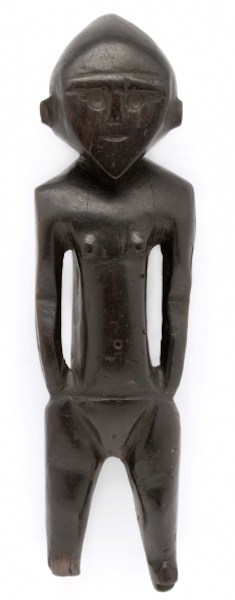




Tongan Sculpture

Tonga is better known for its Tongan war clubs than its figurative sculpture.
Figurative sculpture from Tonga is very rare. Sculpture is done in hardwood or sperm whale Ivory.
Figures are female and have simple clean forms with superb clarity.
Tonga is also renowned for its superb war clubs
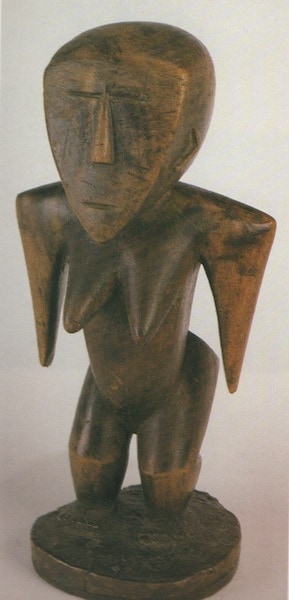



Maori Sculpture

Maori Sculpture
The New Zealand Maori were prolific sculpture artists and there are whole books on just Maori Art. Maori Sculpture and Maori Art will be in a separate article.
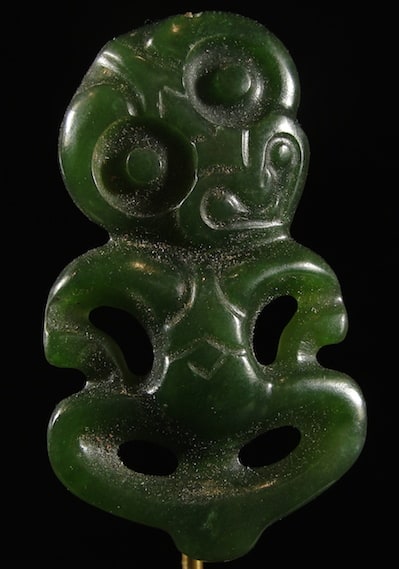

Polynesian Sculpture
This is just some examples, so I hope you can appreciate the vast variety of Polynesian Sculptures. The Pacific is probably the most prolific figure-producing region of the World after Africa. As Oceanic
If you enjoyed this article you may also enjoy New Guinea sculpture and Polynesian War Clubs
All images in this article are for educational purposes only.
This site may contain copyrighted material the use of which was not specified by the copyright owner.






